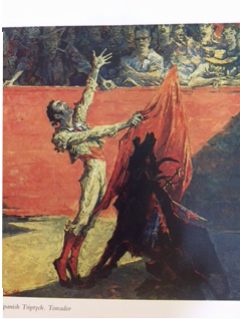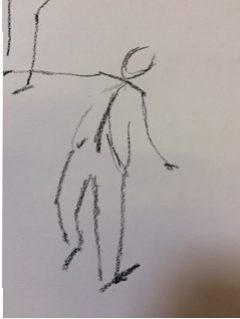Caroline started her talk by showing some examples of people in motion.
Artist Sergei Chepik used strong exaggerated poses to bring energy to his paintings such as the bullfighter.
While Mary Cassatt used the strokes of her pastels to convey movement.
She painted babies and toddlers who were “caught in the moment ” as it is obvious to the viewer that the child could not have maintained that pose for long.
To capture people moving can be tricky and it might help to draw a stick figure first, taking care to show the curve of the back, and the correct angles of the arms and legs. The correct slope of the shoulders, waist and hips can be indicated with a straight sloping line. From this base you can then flesh out the drawing. You don’t even need to paint fully every part of the body, sometimes it’s better to simply give a blur suggesting a hand or foot as this in itself will suggest movement. You should try to measure the angle between the head and the legs to ensure you position them correctly.
Once you are happy with the positioning of your figure you can enhance the feeling of movement by putting in creases in the clothing and shadows on the limbs to emphasize muscles being used. Hair is also great to convey movement as it can be shown flying in the wind.
Landscapes can be made more interesting by the inclusion of people working, or simply walking. If the figure is shown performing a sport , the brain automatically fills in the next move to your still frame and so movement is seen.
Once again, many thanks to Lesley McBride, who kindly provided the text and photos of this session.




